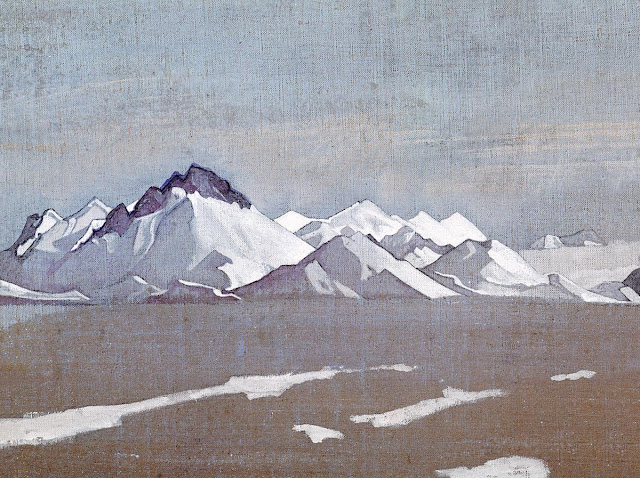VITTORIO SELLA (1859-1943)
Trango Towers (6,286 m - 20,623 ft)
Pakistan
In Trango towers, Karakoram 1909 expedition of the Duke of Abruzzi, Film photography
The mountains
The Trango Towers are a family of rock towers situated in Gilgit-Baltistan, in the north of Pakistan. The Towers offer some of the largest cliffs and most challenging rock climbing in the world, and every year a number of expeditions from all corners of the globe visit Karakoram to climb the difficult granite. They are located north of Baltoro Glacier, and are part of the Baltoro Muztagh, a sub-range of the Karakoram range.
The highest point in the group is the summit of Great Trango Tower (6,286 m - 20,623 ft), the east face of which features the world's greatest nearly vertical drop.
All of the Trango Towers lie on a ridge, roughly northwest-southeast, between the Trango Glacier on the west and the Dunge Glacier on the east. Great Trango itself is a large massif, with four identifiable summits : Main (6,286 m - 20,623 ft)), South or Southwest (6,250 m - 20,510 ft)), East (6,231 m (20,443 ft)), and West (6,223 m (20,417 ft)). It is a complex combination of steep snow/ice gullies, steeper rock faces, and vertical to overhanging headwalls, topped by a snowy ridge system.
Just northwest of Great Trango is the Trango Tower (6,239 m (20,469 ft), often called
"Nameless Tower". This is a very large, pointed, rather symmetrical spire which juts (1,000 m -3,300 ft) out of the ridgeline. North of Trango Tower is a smaller rock spire known as "
Trango Monk." To the north of this feature, the ridge becomes less rocky and loses the large granite walls that distinguish the Trango Towers group and make them so attractive to climbers; however the summits do get higher. These summits are not usually considered part of the Trango Towers group, though they share the Trango name. Trango II (6,237 m -20,463 ft)) lies northwest of the Monk, and the highest summit on the ridge, Trango Ri (6,363 m -20,876 ft)), lies northwest of Trango II.
Just southeast of Great Trango (really a part of its southeast ridge) is the Trango Pulpit (6,050 m - 19,850 ft)), whose walls present similar climbing challenges to those of Great Trango itself. Further, to the south is Trango Castle (5,753 m -18,875 ft)), the last large peak along the ridge before the Baltoro Glacier.
The artist
Vittorio Sella is a mountain italian climber and photographer who took his passion for mountains from his uncle, Quintino Sella, founder of the Italian Alpine Club. He accomplished many remarkable climbs in the Alps, the first wintering in the
Matterhorn and Mount Rose (1882) and the first winter crossing of
Mont Blanc (1888) and
Les Rouies (1900).
He took part in various expeditions outside Italy:
- Three in the Caucasus in 1889, 1890 and 1896 where a summit still bears his name;
- The ascent of Mount Saint Elias in Alaska in 1897;
- Sikkim and Nepal in 1899;
- Possibly climb
Mount Stanley in Uganda in 1906 during an expedition to the Rwenzori;
- Recognition at
K2 in 1909;
- In Morocco in 1925.
During expeditions in Alaska, Uganda and
Karakoram, he accompanied the Duke of Abruzzi, Prince Luigi Amedeo di Savoia.
Sella continues the practice of climbing into his old age, completing his final attempt in the
Matterhorn at the age of 76; a climb he had to interrupt the rise following an accident in which one of his guides injured. He died in his hometown during World War II. His photographic collection is now managed by the Sella Foundation.
His photos mountain are still considered today to be among the finest ever made.
Jim Curran believes that "Sella remains probably the greatest photographer of the mountain. His name is synonymous with technical perfection and aesthetic refinement. "
The quality of the pictures of Vittorio Sella is partly explained by the use of a view camera 30 × 40 cm, despite the difficulty of the transportation of such a device, both heavy and fragile in places inaccessible; to be able to transport it safely, he had to make special pieces that can be stored in saddle bags. His photographs have been widely distributed, either through the press or in the galleries, and were unanimously celebrated; Ansel Adams, who was able to admire thirty-one in an exhibition that was organized at Sella American Sierra Club, said they inspired him
"a religious kind of sense of wonder." Many of his pictures were taken in the mountains for the very first time in the History, which give them a much artistic, historical but also scientific value ; for example, one could measure the decline in the Rwenzori glaciers in Central Africa.
-%20K2%20%20in%201909.jpg)
















